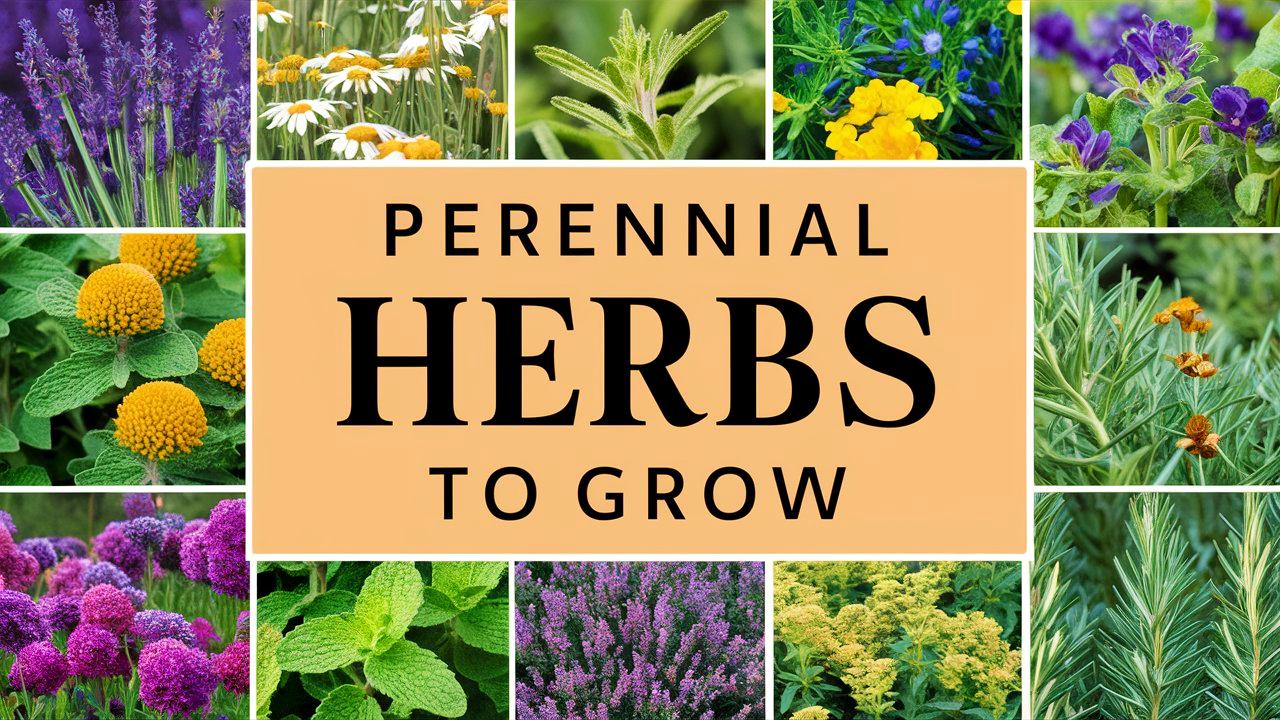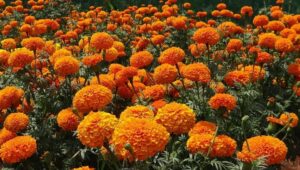Growing perennial herbs is an incredibly rewarding endeavor for any gardening enthusiast, especially beginners. These herbs provide not only flavors for cooking but also an array of medicinal properties, aromatic qualities, and aesthetic appeal in gardens.
Unlike annual plants, perennial herbs come back year after year, resulting in long-term benefits for both the gardener and the garden itself. In this blog post, we’ll explore thirty perennial herbs, detailing their growing conditions, uses, and care requirements.
Rosemary
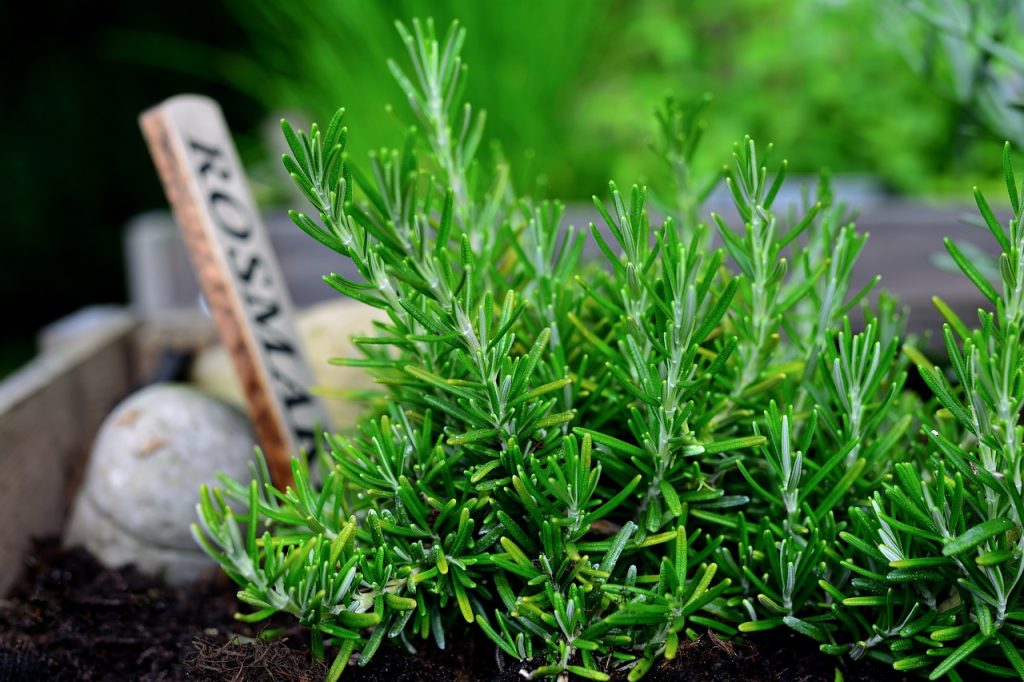
Rosemary (Salvia rosmarinus) is a versatile herb celebrated for its fragrant, needle-like leaves and woody stems. Thriving in sunny environments, it’s hardy in USDA zones 7 through 10. Rosemary prefers well-drained soil and does well in containers or directly in the ground. This aromatic herb enhances dishes such as roasted meats, potatoes, and bread.
To cultivate rosemary, start by planting either seeds or cuttings in spring. The plant requires pruning for shape and airflow, promoting bushier growth and preventing disease. Be cautious not to overwater, as excess moisture can lead to root rot. For beginners, growing rosemary in pots may ease maintenance and provide easier access for harvesting.
Lavender
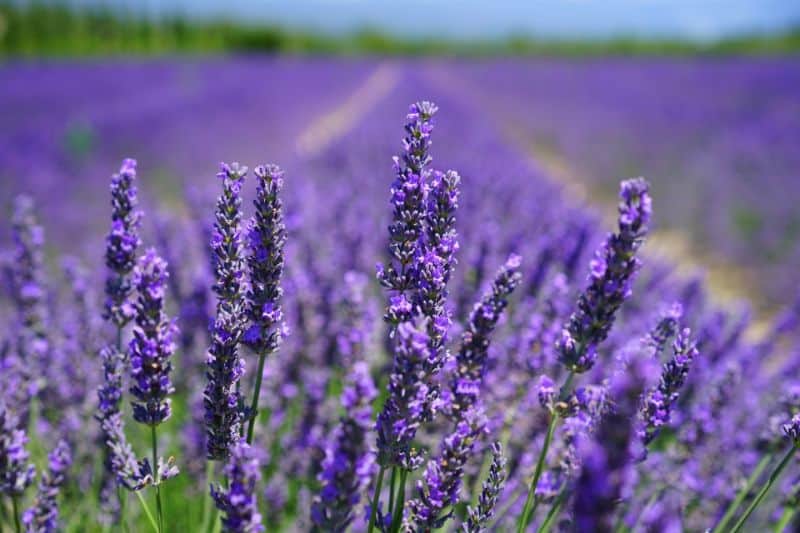
Known for its soothing fragrance and beautiful purple flowers, lavender (Lavandula) not only beautifies gardens but is also renowned for its essential oils and culinary uses. Hardy in zones 5 to 10, lavender prefers sandy, well-draining soil and full sun.
For optimal growth, start lavender from seedlings or cuttings in spring. Regular pruning encourages bushy growth and enhances flower production. Harvest flowers in mid-summer for drying or culinary uses, such as in teas, desserts, or as a seasoning. Lavender’s ability to repel pests makes it a beneficial companion plant.
Oregano
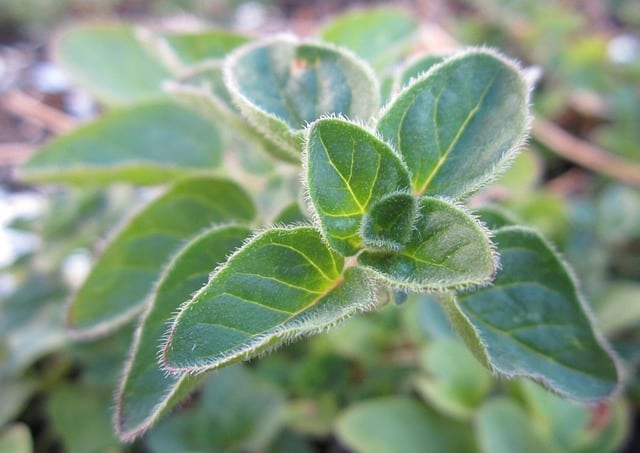
Oregano (Origanum vulgare) is a staple in Mediterranean cuisine, adding a robust flavor to various dishes. Hardy in zones 5 to 10, this perennial herb flourishes in well-drained soil and full sun. Its drought-resistant nature makes it an excellent choice for low-maintenance gardens.
Oregano can be easily propagated from seeds or cuttings. Once established, it can spread vigorously, so consider planting it in a container to manage its growth. The leaves are best harvested before the plant flowers to ensure the best flavor. Not only useful in cooking, oregano also boasts anti-bacterial and anti-inflammatory properties.
Marjoram
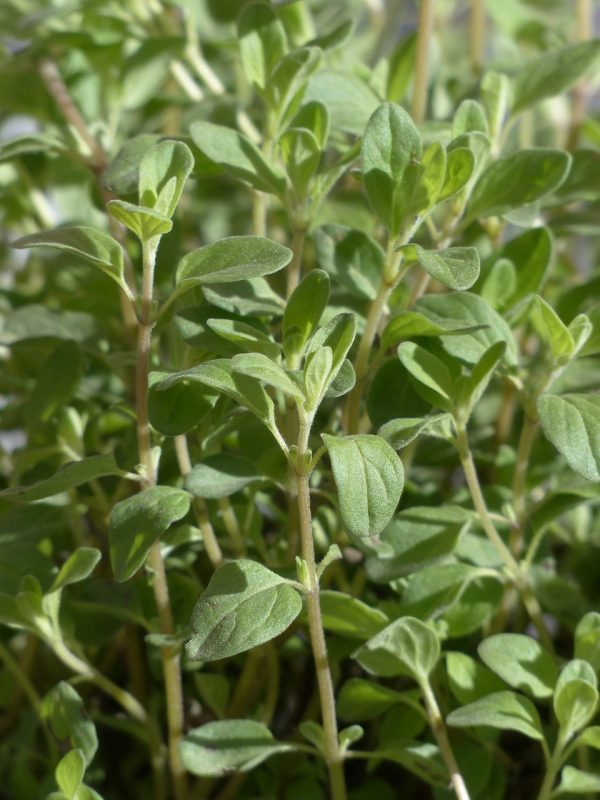
Marjoram (Origanum majorana) is closely related to oregano but offers a milder, sweeter flavor. This herb thrives in warm climates, ideally USDA zones 8 to 10. Marjoram prefers well-drained soil, full sun, and regular moisture.
Plant marjoram from seeds indoors in early spring or directly outdoors after the last frost. Ensure regular harvesting, as this encourages growth and prevents flowering, which can diminish flavor. Marjoram works well in dressings, marinated dishes, and alongside vegetables.
Thyme
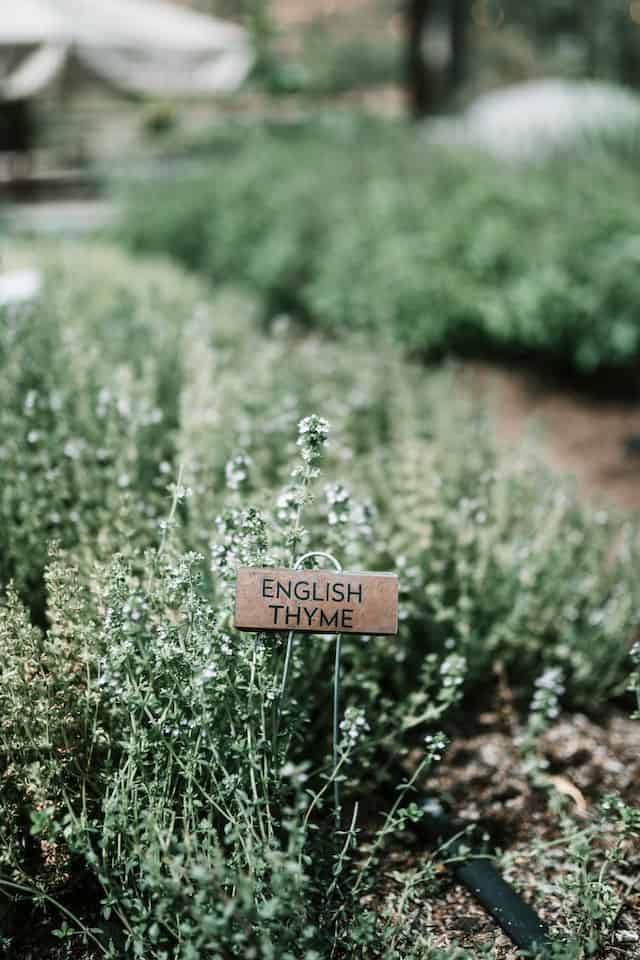
Thyme (Thymus vulgaris) is a versatile, fragrant herb widely used in various cuisines. Its tiny leaves pack a rich flavor, making it a favorite in soups, stews, and meats. Hardy in zones 4 to 9, thyme requires well-draining soil and full sun exposure.
Starting thyme can be achieved through seeds, cuttings, or divisions. It prefers dry to moderate moisture levels. Regular pruning enhances bushiness and prolongs the harvesting period. Thyme is also valued for its antibacterial properties and is a fantastic addition to medicinal gardens.
French Tarragon
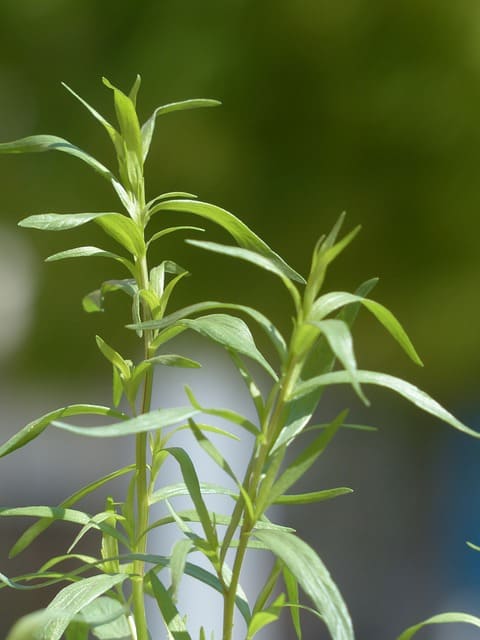
French tarragon (Artemisia dracunculus var. sativa) is a culinary herb known for its aromatic leaves and distinct flavor. Unlike its Russian counterpart, French tarragon is prized for its superior taste and culinary applications, particularly in French cuisine. It grows well in zones 4 to 9.
Growing French tarragon typically requires purchasing a nursery plant, as it does not produce viable seeds. This herb prefers well-drained soil and full sun. Regular harvesting and pinching back will promote bushy growth. Its use extends to salads, dressings, and sauces, making it a versatile addition to the herb garden.
Sage
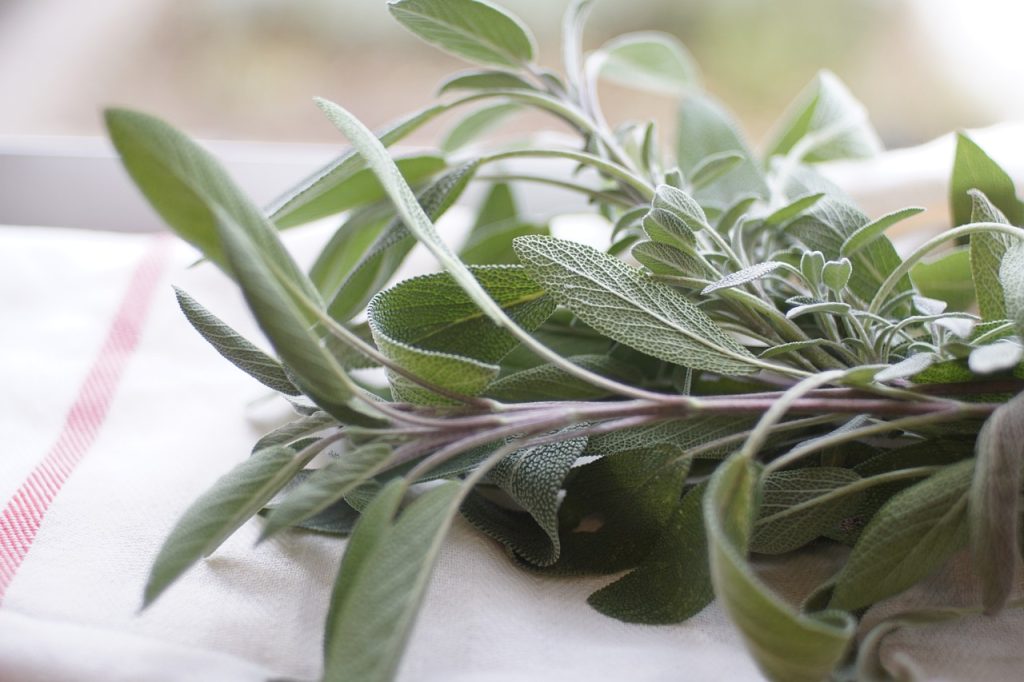
Sage (Salvia officinalis) is a hardy perennial with aromatic gray-green leaves. This herb is well-loved for both its culinary applications and medicinal properties. Sage thrives in zones 5 to 9 and prefers well-drained soil, making it ideal for rock gardens and sandy areas.
Plant sage from seeds or divisions in early spring. Regular watering is essential until it’s established, but once mature, it’s relatively drought-tolerant. Prune back in early spring to encourage new growth. Sage adds a savory flavor to meats, stuffing, and sauces and is often used in herbal teas.
Mint
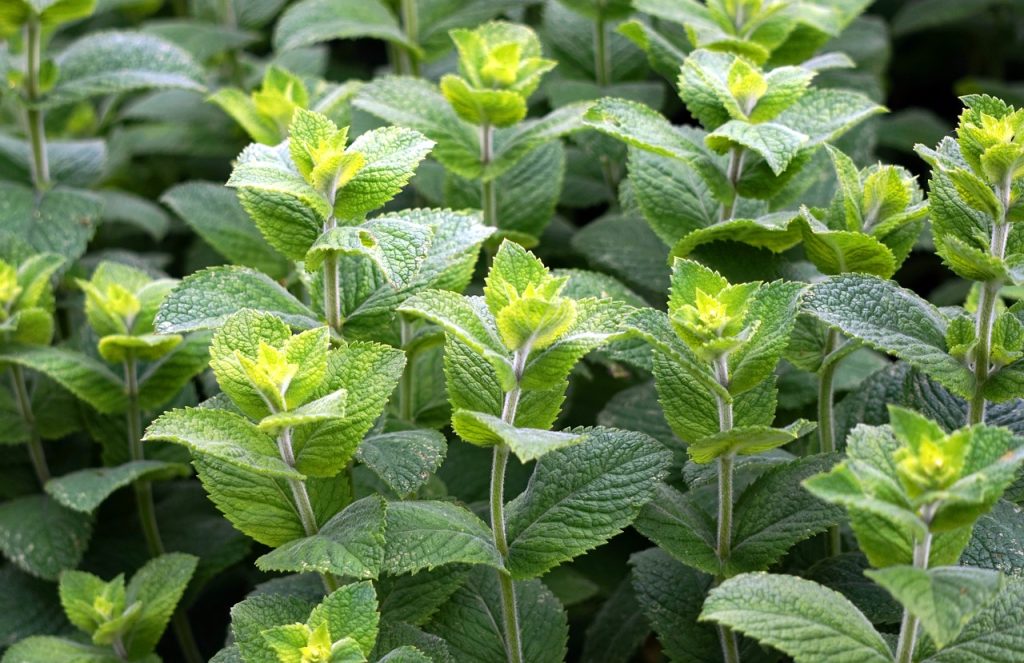
Mint (Mentha) is a vigorous grower and a favorite among those who enjoy refreshing teas and culinary delights. Known for its cool aroma and flavor, mint can thrive in a variety of conditions, but it prefers moderate moisture and partial shade. It is hardy in zones 3 to 11.
To prevent mint from taking over your garden, consider planting it in pots or delimiting its space with barriers. Mint grows well from seeds or cuttings. Regular harvesting encourages bushiness and prevents flowering. Beyond culinary uses, mint is known for its digestive benefits and is commonly used in herbal remedies.
Parsley (Biennial)
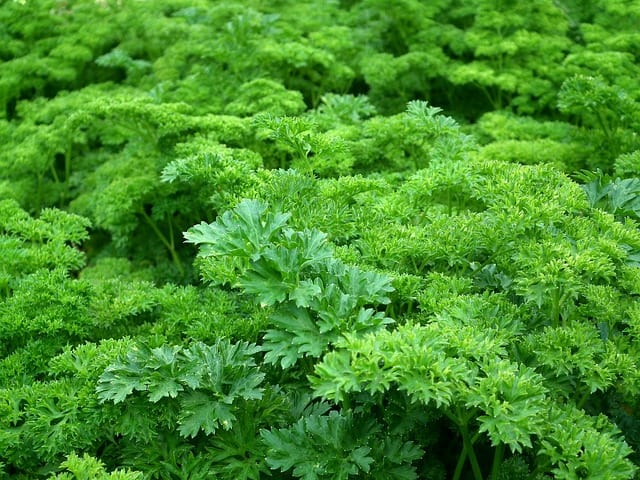
While technically a biennial, parsley (Petroselinum crispum) is usually grown as an annual herb. Renowned for its use as a garnish and culinary flavoring, parsley is versatile in the kitchen. It thrives in rich, moist soil and full sun, and is hardy in zones 4 to 9.
Start parsley from seeds directly in the garden or indoors. Be patient, as it can take some time to germinate. Regular watering will keep the leaves lush. Harvesting can begin when the leaves are sizeable, and you can cut them as needed. Parsley offers nutritional benefits and is a source of vitamins A, C, and K.
Lemon Balm
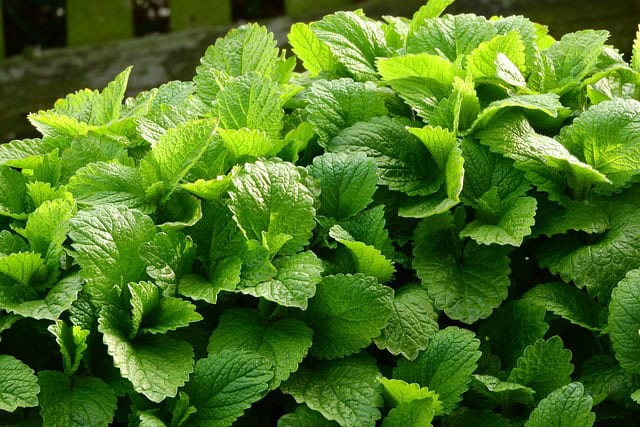
Lemon balm (Melissa officinalis) is a perennial herb known for its refreshing lemon scent and flavor. Belonging to the mint family, it thrives in USDA zones 3 to 9. It prefers well-drained soil and partial to full sun conditions.
To grow lemon balm, it is best to start from nursery plants or divisions, as seeds can be tricky. Plant it where it can spread; lemon balm is known for its vigorous growth. It can be harvested throughout the growing season. This herb is excellent for teas, and cocktails, and possesses calming properties.
Chives
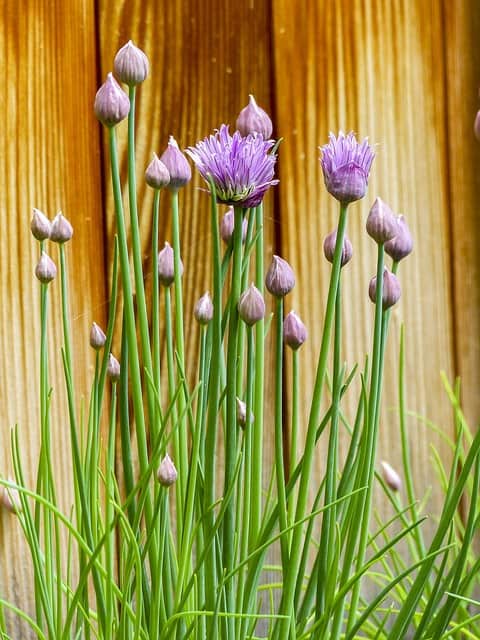
Chives (Allium schoenoprasum) are among the easiest herbs to grow, making them ideal for beginners. With their delicate, onion-like flavor, chives are perfect for salads, soups, and as a garnish. They thrive in zones 3 to 9 and prefer rich, well-drained soil and full sun to partial shade.
Chives are typically grown from seeds or divisions. They can be sown directly into the garden or started indoors. Harvest chives by snipping off the leaves, allowing the plant to regrow. They also produce attractive purple flowers and are an excellent source of vitamins A and C.
Garlic Chives
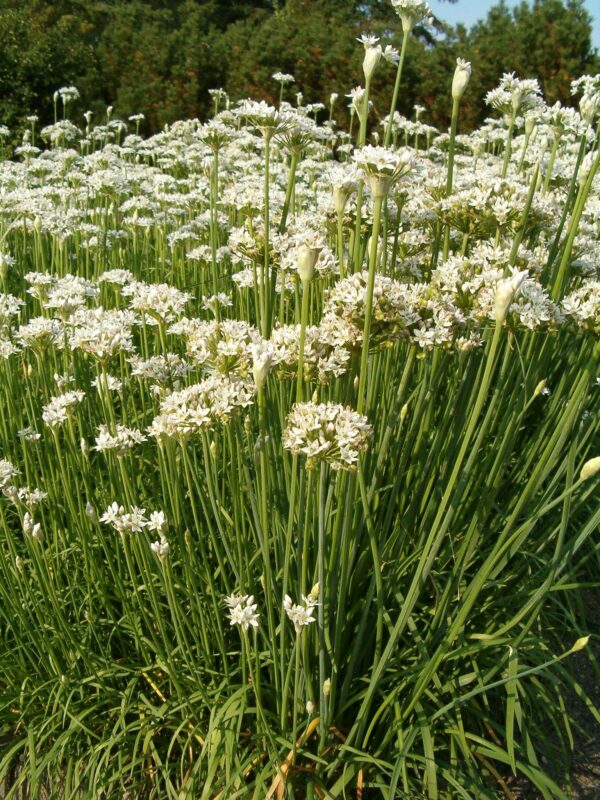
Garlic chives (Allium tuberosum) are closely related to common chives but have a distinct garlic flavor. They grow well in a variety of conditions and are hardy in zones 3 to 9. Garlic chives thrive in moist, fertile soil and full sun.
Propagate garlic chives through seeds or divisions. Regular watering aids in healthy growth. The flat, narrow leaves can be harvested as needed. Both the leaves and flowers are edible, adding a flavorful touch to salads, stir-fries, and dishes that benefit from garlic notes.
Sorrel
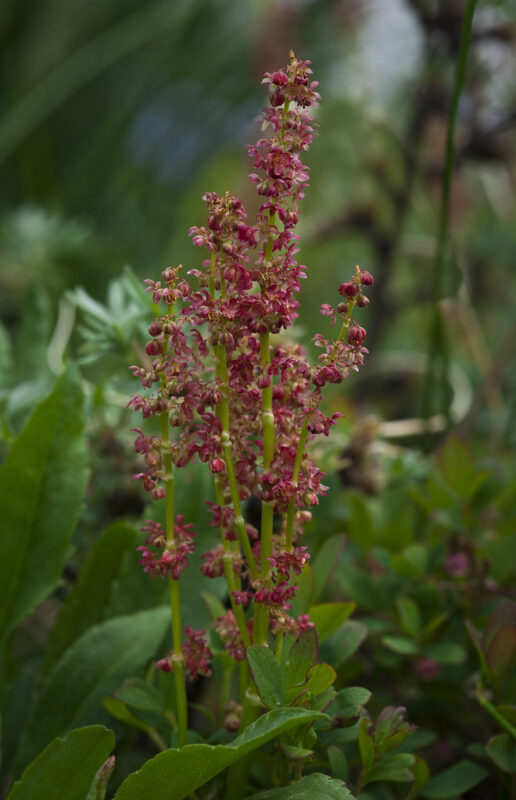
Sorrel (Rumex acetosa) is a unique herb known for its tangy, lemon-like flavor. It thrives in cooler climates and is hardy in zones 3 to 9. Sorrel prefers well-drained, rich soil and can tolerate partial shade.
When planting sorrel, start from seeds in early spring or buy established plants. Regular harvesting encourages continued growth, and it is best used fresh to enjoy its vibrant sour notes in salads, soups, or as a flavorful garnish. Sorrel is also noted for its high vitamin C content.
Yarrow
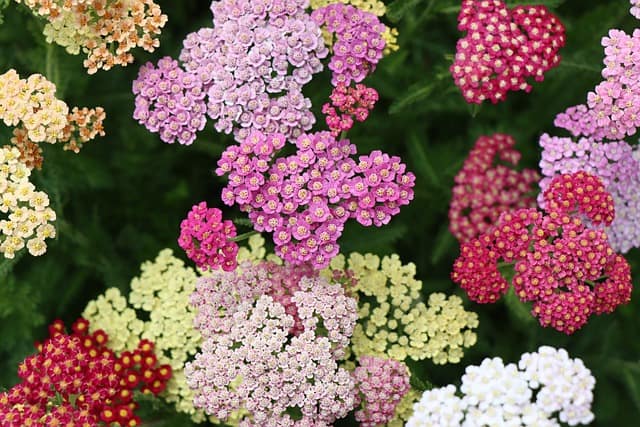
Yarrow (Achillea millefolium) is a hardy perennial known for its feathery leaves and clusters of tiny flowers. It is resilient in a range of conditions and flourishes in zones 3 to 9. Yarrow prefers well-drained soil and full sun, making it ideal for xeriscaping.
Growing yarrow from seeds or divisions is straightforward. Its drought tolerance means it’s low-maintenance once established. This herb has a long history of medicinal use, reputed for treating wounds and promoting healing. Yarrow can also be used in salads and herbal teas.
Chicory
![]()
Chicory (Cichorium intybus) is an interesting perennial that can be enjoyed both for its edible leaves and roots. It thrives in zones 3 to 9 and prefers well-drained, nutrient-rich soils and sunny locations.
When planting chicory, start with seeds in early spring. The leaves can be harvested for salads, and the roots can be roasted for coffee substitutes. Chicory is also known to promote digestive health and is often found in herbal remedies.
Rue
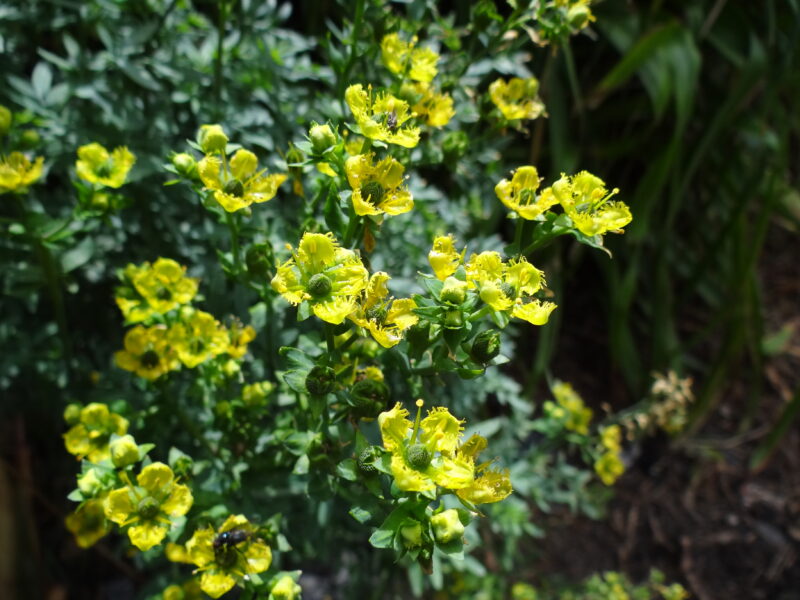
Rue (Ruta graveolens) is a unique perennial herb with a long history in herbal medicine. It is hardy in zones 4 to 9 and prefers well-drained soil and full sun. Rue’s leaves have a strong, pungent aroma and should be handled carefully.
To grow rue, start with seeds or young plants. Regular pruning is necessary to avoid legginess. Note that rue can cause skin irritation, so extra caution is advised. This herb has culinary uses in Mediterranean cuisine but is more commonly known for its medicinal properties, such as being used to improve digestion and relieve anxiety.
Winter Savory
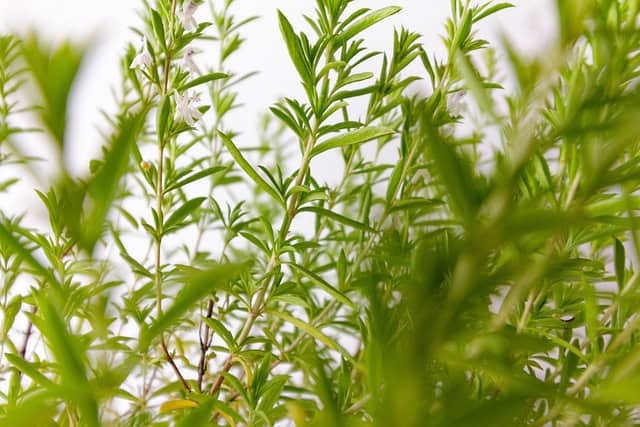
Winter savory (Satureja montana) is a lesser-known herb that adds robust flavor to various dishes, particularly meats and beans. Hardy in zones 5 to 9, it prefers full sun and well-drained soil.
Plant winter savory from seeds or divisions in spring. It requires minimal care once established, making it suitable for beginners. Regular harvesting encourages healthy growth. Winter savory has a more intense flavor than summer savory and benefits various dishes and culinary creations.
Bay Laurel
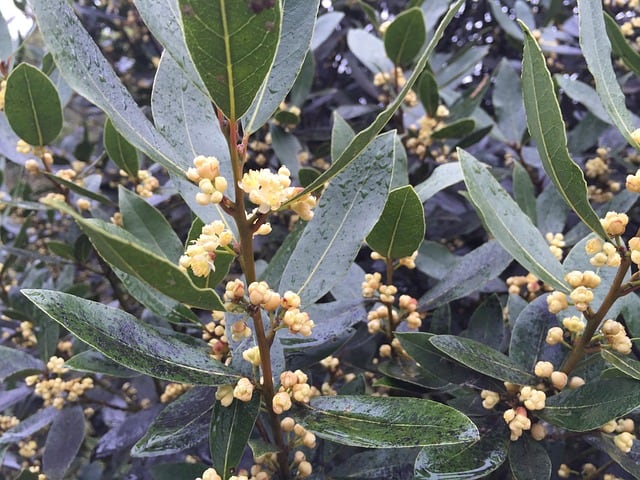
Bay laurel (Laurus nobilis) is an evergreen shrub renowned for its aromatic leaves, which are commonly used in cooking. Hardy in zones 8 to 10, bay laurel thrives in well-drained soil and prefers full sun to partial shade.
Growing bay laurel can be initiated from seeds or nursery plants. The tree can also be kept pruned to maintain size. The leaves can be harvested all year round for culinary use, imparting rich flavors to soups, stews, and sauces. Bay laurel is also valued for its fragrant, ornamental presence in landscapes.
Lovage
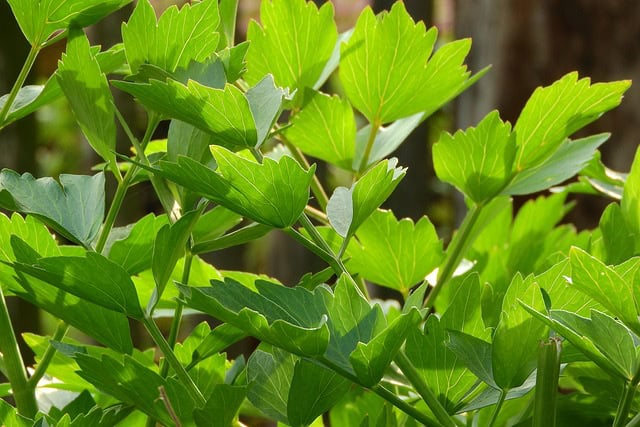
Lovage (Levisticum officinale) is a tall, leafy perennial with a strong flavor similar to celery. Hardy in zones 4 to 9, it prefers fertile, moist soil and full sun. Lovage can grow impressively large, making it a striking addition to any garden.
Plant lovage from seeds, starting indoors or direct sowing after frost. It thrives in rich, consistent moisture. Harvest leaves as needed, especially the young leaves for culinary use in soups, salads, and casseroles. Lovage is often used in traditional herb gardens for its height and bold flavor.
Hyssop
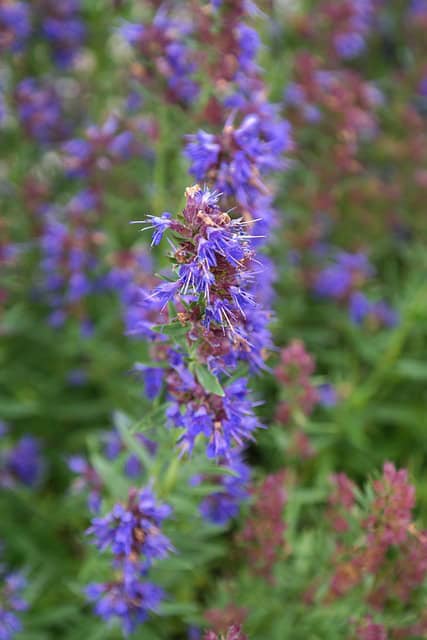
Hyssop (Hyssopus officinalis) is a fragrant herb belonging to the mint family, known for its medicinal and culinary uses. This hardy perennial grows well in zones 3 to 9 and flourishes in poor, well-drained soils with full sun exposure.
To grow hyssop, propagate through seeds or cuttings. Regular pruning after flowering encourages a bushy plant that continues to produce aromatic leaves. Hyssop can be added to salads or used in teas, as well as traditionally to support respiratory health.
Sweet Cicely/ Anise
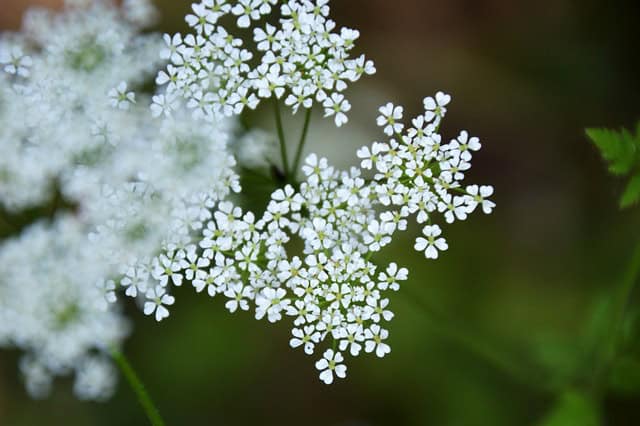
Sweet cicely (Myrrhis odorata) is celebrated for its sweet-flavored leaves and seeds that have a pleasant anise flavor. Hardy in zones 3 to 8, it thrives in rich, moist soil and prefers partial shade.
Plant sweet cicely in early spring from seeds or divisions. Its leaves can be harvested for culinary use, especially in desserts or as a sweetener for teas. This herb is also appreciated for its medicinal qualities, known for aiding digestion.
Roman Chamomile
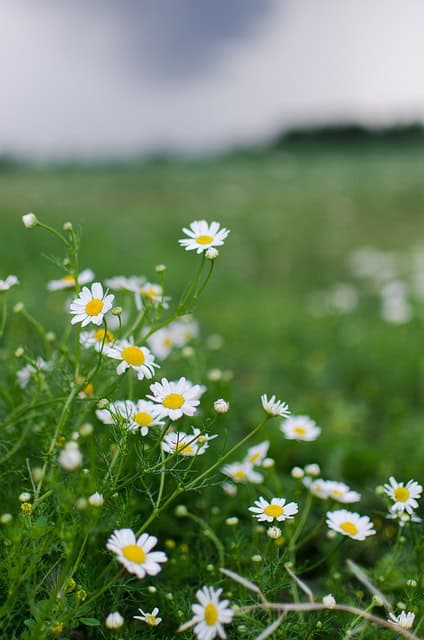
Roman chamomile (Chamaemelum nobile) is a low-growing perennial known for its daisy-like flowers and soothing herbal tea applications. Hardy in zones 4 to 9, it prefers well-drained soil and full sun.
Start Roman chamomile from seeds or seedlings in early spring. Regular maintenance involves deadheading spent flowers to encourage new growth. Harvest the flowers when fully open for a fragrant tea with calming effects. It is also beneficial as a ground cover or in sensory gardens.
Salad Burnet
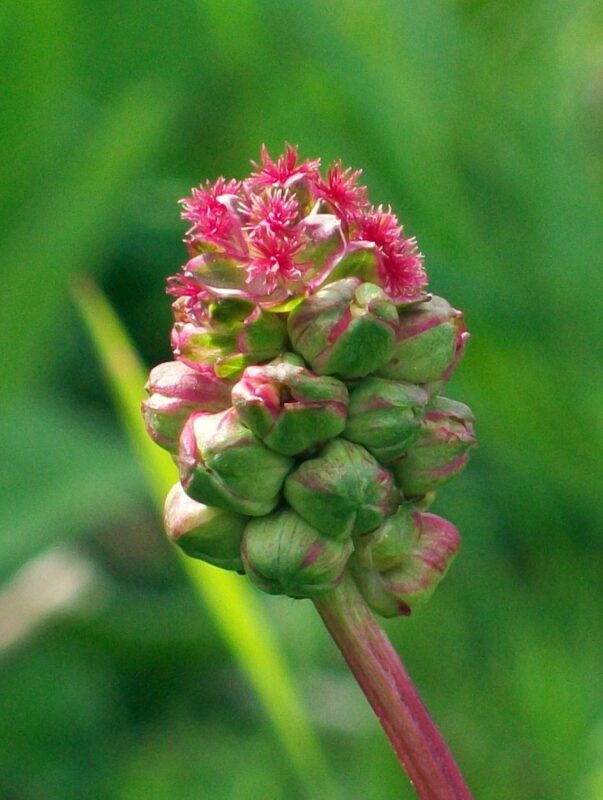
Salad burnet (Sanguba minor) is a perennial herb with a distinct flavor reminiscent of cucumber. Hardy in zones 3 to 9, it thrives in rich, well-drained soil and partial to full sun.
Plant salad burnet from seeds or divisions. Regular watering ensures healthy growth. The leaves can be harvested throughout the growing season to add a refreshing flavor to salads and dishes. Used in culinary specialties, it also has a long history of medicinal uses.
Bergamot
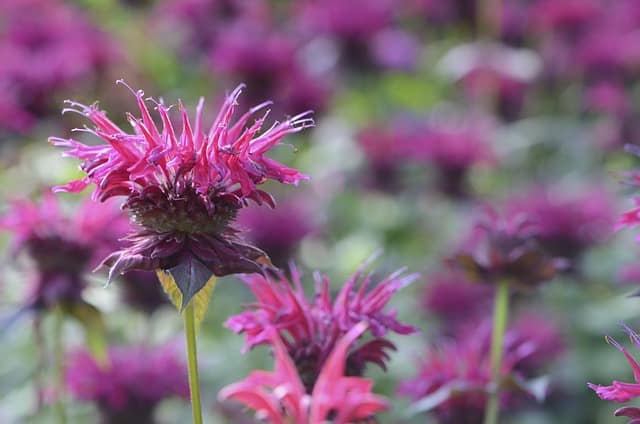
Bergamot (Monarda fistulosa), also referred to as bee balm, is known for its vibrant flowers that attract pollinators. Hardy in zones 4 to 9, bergamot thrives in well-drained soil and full sun to partial shade.
Grow bergamot from seeds or divisions, enjoying its growth benefits as a companion plant. Regular pruning can enhance flowering and monitor for pests. The leaves are used to flavor teas, and the flowers can brighten salads or provide herbal remedies, thanks to their anti-inflammatory properties.
Catnip
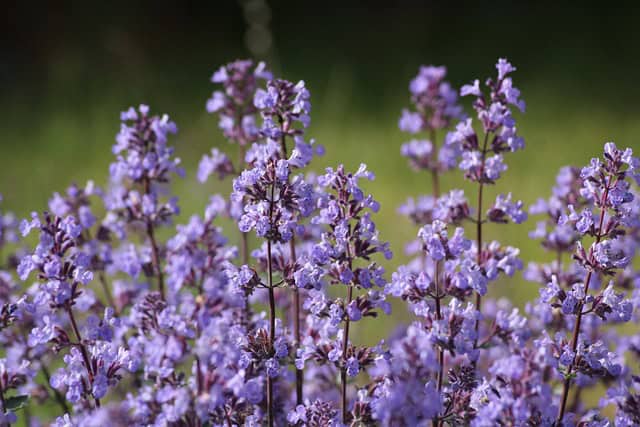
Catnip (Nepeta cataria) is not just loved by feline friends; it’s a perennial herb with a wonderfully minty flavor for humans too. Hardy in zones 3 to 9, catnip prefers well-drained soil and full sun.
To cultivate catnip, start from seeds or cuttings. Regular pruning will help the plant remain bushy. The leaves can be dried for tea or used as a calming herbal remedy. Beyond its culinary uses, catnip also attracts beneficial insects, enhancing the biodiversity of your garden.
Echinacea
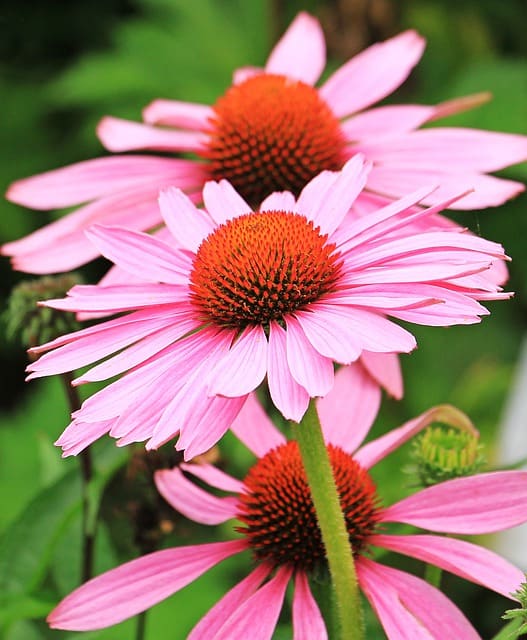
Echinacea, commonly known as coneflower, is a beautiful perennial herb celebrated for its medicinal properties. Hardy in zones 3 to 9, it prefers well-drained soil and full sun. Its vibrant flowers attract pollinators and enhance any garden design.
To grow echinacea, start with seeds or nursery plants. Once established, it’s relatively low-maintenance. The flowers can be harvested for teas or tinctures, known to support immune health. Echinacea’s striking appearance also provides ornamental value in any landscape.
Valerian
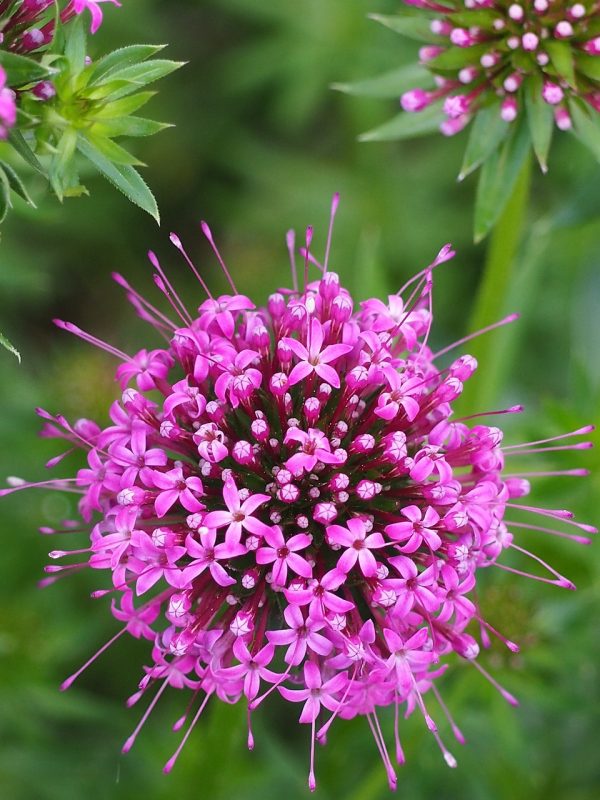
Valerian (Valeriana officinalis) is an herb famous for its calming effects, making it a popular choice in herbal remedies for anxiety and insomnia. Hardy in zones 3 to 9, it flourishes in moist, well-drained soil and full sun to partial shade.
To cultivate valerian, start from seeds or divisions in early spring. Regular watering is essential, especially during dry periods. The roots are harvested for extraction and can be used in teas for relaxation. Valerian’s delicate flowers add beauty and attract pollinators to gardens.
Marshmallow

Marshmallow (Althaea officinalis) is a perennial herb known for its medicinal qualities and edible properties. It thrives in zones 4 to 9 and prefers moist, rich soil with full sun to partial shade.
To grow marshmallow, start from seeds or divisions. Consistent moisture is essential for healthy growth. The leaves and roots are edible and can be used to create herbal remedies. Marshmallow is also recognized for its soothing effects on the digestive system and provides a charming addition to any garden.
Tansy
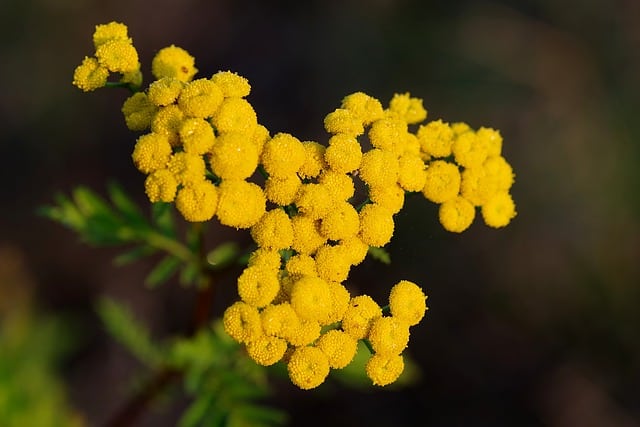
Tansy (Tanacetum vulgare) is a unique perennial herb known for its strong smell and insect-repellent properties. Hardy in zones 3 to 9, it prefers well-drained soil and full sun. While it has potential uses in herbal medicine, caution is advised due to its toxicity in excessive quantities.
To plant tansy, use seeds or divisions, allowing it to spread in garden spaces carefully. Regular pruning will keep the plant in check. Tansy leaves can repel pests and works as a companion plant. Though largely ornamental, its flowers can be used in some herbal tinctures.
Willow Herb
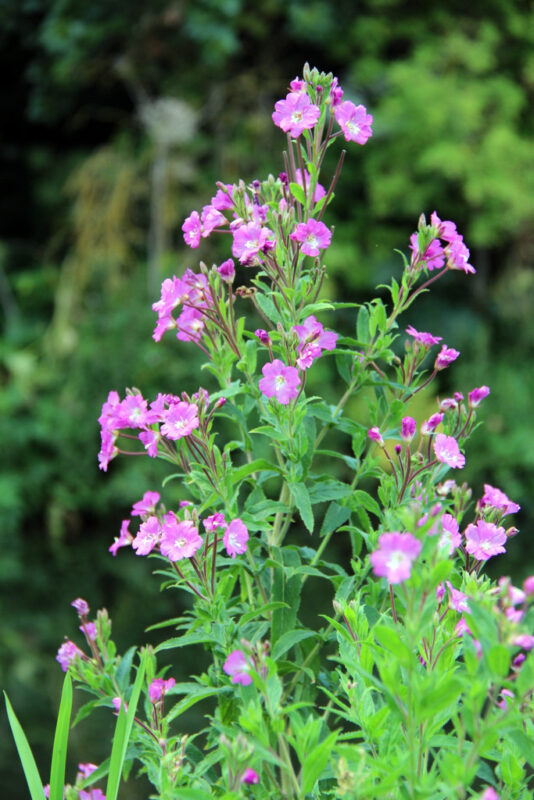
Willow herb (Epilobium angustifolium) is a striking perennial known for its long-lasting flowers. Hardy in zones 3 to 9, it thrives in a variety of soils, including poorer conditions. Native to North America, willow herb supports both pollinators and wildlife interest.
Starting willow herb from seeds allows it to establish and spread easily. Though not traditionally cultivated as an herb, it has medicinal properties, especially in treating respiratory conditions. Additionally, its bright blooms make it a lovely addition to wildflower gardens.
Meadow Sweet

Meadow sweet (Filipendula ulmaria) is a perennial renowned for its fragrant white flowers and historical use in traditional medicine. It thrives in moisture-rich, well-drained soil and is hardy in zones 3 to 9.
Growing meadow sweet from seeds or divisions in spring allows ample room for development. Regular watering keeps the plant flourishing. The flowers can be harvested for culinary purposes, and the leaves have been traditionally used for medicinal teas.
Alfalfa
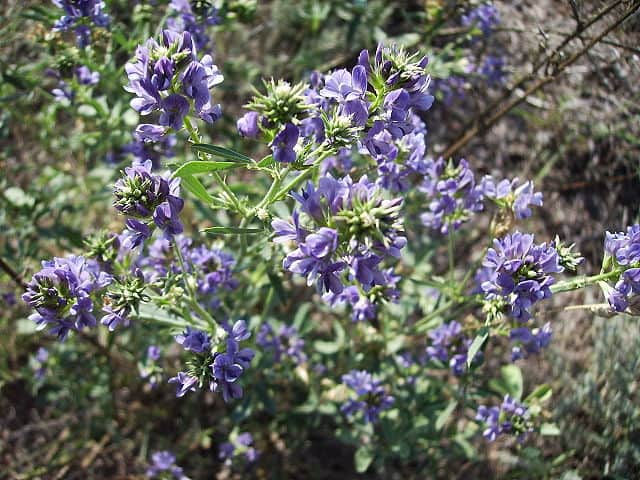
Alfalfa (Medicago sativa) is best known as a forage crop, but it also serves various culinary and health purposes. Hardy in zones 3 to 9 and tolerant of various soil qualities, alfalfa thrives in full sun conditions.
Starting alfalfa from seeds is simple and can be overseeded in spring. Its flash green growth can fix nitrogen in the soil, benefiting your garden. The young leaves can be used in salads, smoothies, or as a nutritious addition to meals.
Clover
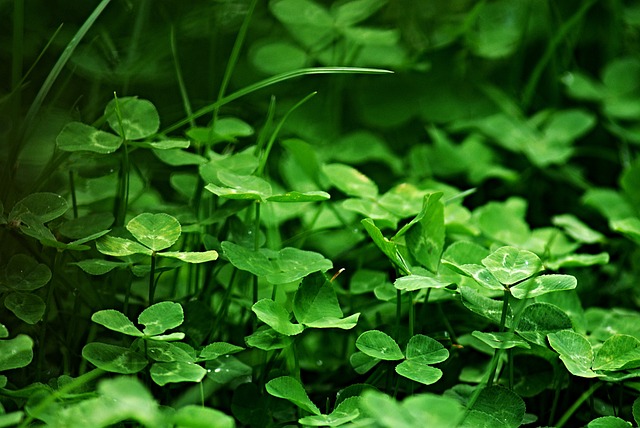
Clover (Trifolium) is often overlooked as a culinary herb but has valuable health benefits and enriches garden soil. Its sweet-smelling flowers can attract pollinators, and the plant is hardy across USDA zones 3 to 10.
Clover grows well in various soil types, making it easy to establish. It can work as a cover crop to improve soil fertility and prevent erosion. Young clover leaves are edible and can be added to salads, providing additional nutrition and flavor.
Good King Henry
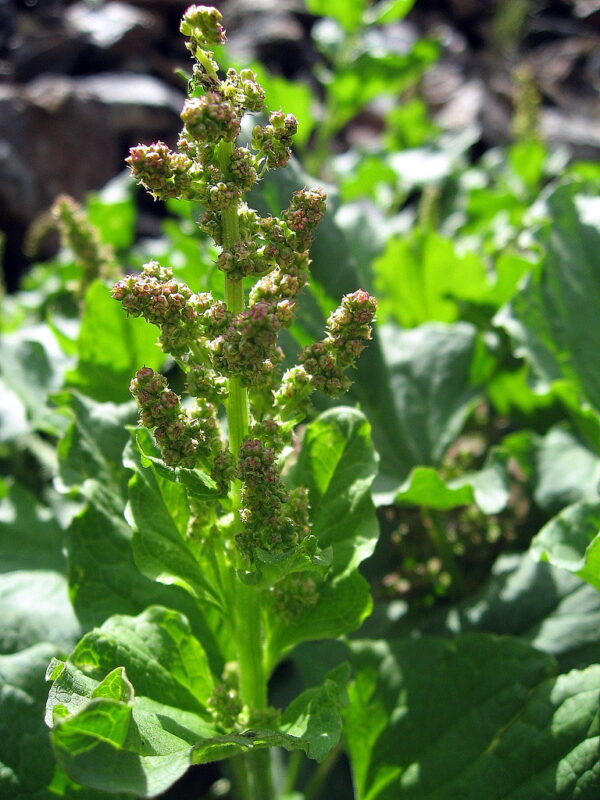
Good King Henry (Chenopodium bonus-henricus) is a versatile perennial grown for its edible leaves, which can be harvested from spring through fall. Hardy in zones 3 to 9, it thrives in rich, well-drained soil with full sun to partial shade.
Planting Good King Henry from seeds or divisions allows it to establish easily. Regular harvesting will encourage continued growth. The tender leaves can be used in dishes like spinach or added to salads and soups. This herb also serves as a beneficial companion plant, attracting pollinators while enriching the soil.


